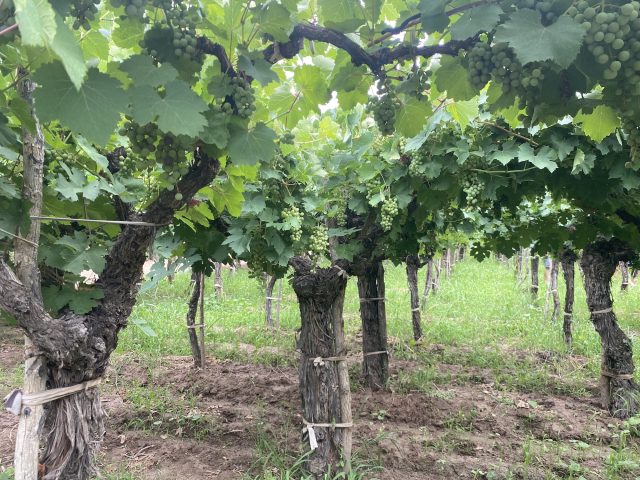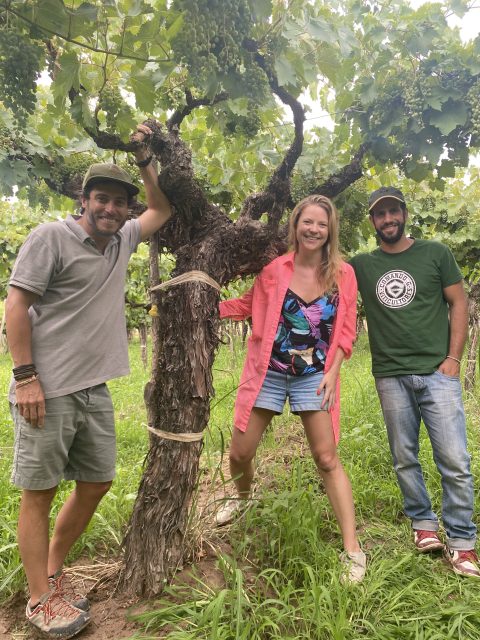Criolla Chica recognised as a quality red grape in Argentina
Almost 500 years after its arrival, Criolla Chica has been recognised by Argentina’s National Viticulture Institute (INV) as a red grape variety suitable for high quality wines.

Criolla Chica, also known as Listán Prieto, was one of the first Vitis vinifera grape varieties to arrive in Argentina and South America in the 16th century. It has been planted around the country since then, playing a significant role in history as one of the main grape varieties for 300 years and the father of Torrontès among other native offspring.
However, until last week, it has not been recognised by the INV as a grape variety of quality — limiting what producers can and cannot put on the label, and using designations typically reserved for table wines. For example, only wines that are declared as ‘vinos de calidad’ by the INV are allowed to be labelled with GI appellations of origin.
“It is really important to be included on this list of approved grape varieties, because we can now use the Geographical Indications (GIs),” explains winemaker Sebastian Zuccardi, who has been at the forefront of the revival of high quality Criolla Chica wines with his boutique winery Cara Sur in Barreal GI in San Juan’s Calingasta Valley.
The use of GIs has become increasingly important within Argentina’s movement towards highlighting its different terroirs and terrains.
Another key change that the inclusion of Criolla Chica will make is enabling the variety to be bottled as a red wine. Previously it was considered a pink grape, and therefore had to be bottled as rosé — or rosado.
“It has been a huge problem that we have had to bottle our Criolla Chica as a rosé and put ‘vino rosado’ on the label,” adds Cara Sur co-owner Pancho Bugallo. “It has the colour of a red wine, and the vinification of a red wine. So commercially it makes much more sense to be able to sell it as a red wine, and also to be able to talk about place.”
Bugallo was one of the producers that pushed the initiative to get Criolla Chica registered as a quality grape variety, which involved sending grape samples of this year’s 2024 vintage to the INV to be tested in microvinifications to see if it met the criteria for a ‘vino de calidad’. He also sent samples of Torrontés Sanjuanino, a native variety and relative to the better known Torrontés Riojano, although it has not yet been approved.
Partner Content
“Torrontés Sanjuanino is the most planted variety and most important grape variety in Calingasta Valley, every producer makes it,” adds Bugallo, who is hoping that the INV might approve the variety in the near future. “To be able to use the GI would be great.”
The National Agricultural Technology Institute (INTA) of Mendoza has been working for several years in the recognition and identification of the native Criolla varieties, including studies into several clones of Criolla Chica planted around the country.
“I think there will now be more of a demand for Criolla Chica,” says INTA agronomist and researcher Gustavo Aliquó. “We need to have more Criolla Chica because there are not that many plants of it left in Argentina, and we have working on a selection process for Criolla Chica and other Criolla varieties with the best winemaking potential.”
According to the INV’s 2023 statistics, there are currently 331 hectares of Criolla Chica planted in Argentina. There are 181 different grape varieties registered as planted in Argentina, although only 49 recognised as ‘vino de calidad’.

Listán Prieto is believed to have originated in Castilla-La Mancha, and, while it is called Criolla Chica in Argentina, other synonyms include Misión or Mission in Mexico and California respectively and País in Chile.
Amanda Barnes is South America correspondent for the drinks business and author of The South America Wine Guide.
Related news
Castel Group leadership coup escalates
For the twelfth day of Christmas...
Zuccardi Valle de Uco: textured, unique and revolutionary wines




